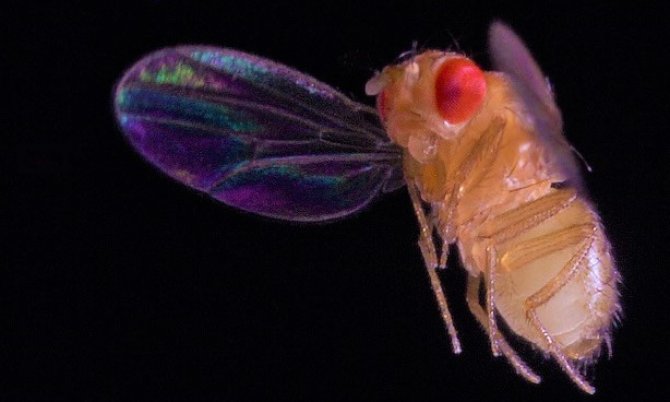
Dossier
Biomimetics, Biomimicry and Bioinspired design
Biomimetics is an interdisciplinary approach that aims to explore the potential of biological systems, systematically analyse their functional principles, transfer these principles into technology, and hence improve quality of life. Similarly, the related disciplines of biomimicry and bioinspired design take inspiration from nature to solve problems in society and engineering. Wageningen University & Research (WUR) works on many facets of biomimetics.
Why look at nature for innovative solutions?
Life has conquered the whole planet. Crustaceans swarm on underwater volcanoes in the deep sea, cactuses grow in scorching deserts, and geese can fly over Mount Everest. In the course of evolution, animals and plants adapted to survive the challenging conditions posed by their respective lifestyles and environments. These adaptations represent creative solutions to fundamental problems, many of which we also face in our highly technologised world. For example, animals can move more efficiently from A to B than any manmade device. Multi-functional materials and smart architectures of organisms make body parts lightweight yet strong. Sophisticated appendages allow skillful mechanical interactions with the environment, of which robotics engineers can only dream.
Examples of biomimetics research
Biomimetic research and design are strongly rooted throughout various research groups at Wageningen University & Research. Below are examples of our research.
Ovipositing wasps inspire steerable needles

A common procedures in a medical setting is the use of needles to insert drugs or to take biopsies. Medical professionals need to get as close to the target as possible without damaging essential structures like blood vessels and nerves.
WUR studied how parasitic wasps are capable to insert extremely thin ovipositors into relatively hard substrate without damaging them, and how they can steer them to a specific target. The secret, the multiple independently moving element, was used to develop a prototype for an ultrathin (0.4 mm) self-propelled steerable needle.
Read more
Video
- Unfortunately, your cookie settings do not allow videos to be displayed. - check your settings
Publication
Partners
This work was done in collaboration between WUR and the Department of Biomechanical Engineering, Delft University of Technology, and is part of the TTW funded project iMIT (Instruments for Minimally Invasive Techniques).
Learning from tree frogs for the design of surgical grippers

Tree frogs are remarkable climbers that can stick with their soft adhesive toe pads to all kinds of surfaces, even wet ones. This performance makes tree frogs ideal models for the design of surgical grippers, which also need to be soft and versatile in order to grip patients tissues gently and firmly.
Wageningen researchers studied the fundamentals of tree frog attachment in an integrative approach. The ambition of our researchers is to unravel the biomimetic potential of these fascinating creatures and to inspire the design prototypes of novel surgical grippers with enhanced performance.
Nimble flying insects and palm-sized drones

Ever tried to swat a fly? Then you'll know that insects are highly-maneuverable flyers. They use their dedicated sensory systems and a specialised flight motor system. Insects steer by making tiny adjustments in the movement patterns of their rapidly beating wings
Scientists from Wageningen study the flight dynamics and control of insects. We use this as bioinspiration for the development of biomimetic Micro Air Vehicles (MAVs); or palm-sized drones. Together with TU Delft, we have developed a highly maneuverable bioinspired drone with flapping-wing-based flight control.
Read more
Video
- Unfortunately, your cookie settings do not allow videos to be displayed. - check your settings
Publications
Partners
To develop bioinspired drones Wageningen researchers work together with the Micro Air Vehicle Laboratory (MAVLab) of Delft University of Technology. The research efforts are partly funded by the TTW project 'To be as nimble as a bee'.
4TU: Bioinspiration for soft robotics

Conventional robots operate in well-defined environments, enabling the execution of repetitive tasks at superhuman speed and accuracy. However, a radically different approach is required to enable robots to safely interact with delicate and complex organic matter or to operate in human-inhabited environments.
In a multidisciplinary collaboration, various WUR groups generate fundamental insight in the functioning of soft biological systems, and use this insight for creating a new generation of soft robotic solutions.
Read more
Publication
Partners
4TU is the alliance of universities of technology in the Netherlands. This research is part of the 4TU consortium Soft Robotics.
Philosophy and Ethics of Biomimetic Technologies

WUR researchers reflect on the relation between nature and technology in biomimetic technology to critically assess the potential and limitations of biomimicry as sustainable design principle.
Our aim is to develop an empirically informed philosophy of biomimicry based on cases within the spectrum of biomimicry. These range from bio-inspired design to bio-integrated design. Our philosophical work focuses on the nature of mimesis, technology and the normative dimension of biomimetic design.
Read more
As part of a PhD project, we will investigate the conceptual relations between different biomimetic approaches, focusing in particular on the normative aspects related to learning from nature as a source of both technical and ethical insight.
For more information about Philosophy and Ethics of Biomimetic Technologies, visit the website of Vincent Blok (Associate Professor at WUR).
Publications about biomimetics
-
Diurnal and nocturnal mosquitoes escape looming threats using distinct flight strategies
-
Flying Into the Wind : Insects and Bio-Inspired Micro-Air-Vehicles With a Wing-Stroke Dihedral Steer Passively Into Wind-Gusts
-
Bumblebees land rapidly by intermittently accelerating and decelerating toward the surface during visually guided landings
-
Bumblebees land rapidly and robustly using a sophisticated modular flight control strategy
-
Temperature-responsive polyelectrolyte complexes for bio-inspired underwater adhesives
-
In the soft grip of nature
-
Design of Tree-Frog-Inspired Adhesives
-
A bio-inspired robotic flapper reveals that flies use torque coupling in escape manoeuvres
-
Functional principles of steerable multi-element probes in insects
-
Alternatives to insecticides: bio-inspired coatings and sprays to tackle insect pests

